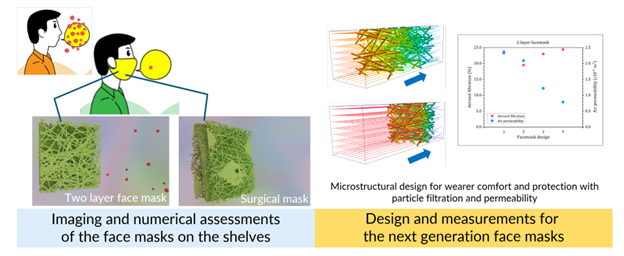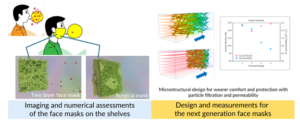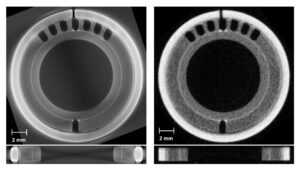Integration of computational fluid dynamics (CFD) and X-ray tomography reveals the differences in face masks used in public.
Recommendations for the use of face masks have been in effect for quite some time now, but how do the masks stop the viruses from spreading, and are all masks equally efficient and comfortable? In order to answer to these questions, a global consortium of researchers from Aalto University, University of Jyväskylä, Swansea University, Institute Medicana Hospital Istanbul and University of California Los Angeles have carried out a set of computational fluid dynamics (CFD) simulations which utilised the actual microstructural models of commonly used ‘off-the-shelf’ face masks. These models were generated from X-ray microtomography 3D images of the various masks. They therefore represent the true structure of the masks at the micro-scale level. This is summarised in the figure and videos below from Complex Materials research group at University of Jyväskylä.

The assessments on the particle filtration efficiency and breathability values of two-layer non-woven face masks and three-layer surgical masks (made out of a melt-blown fabric layer covered with two non-woven fabric layers) immediately captured the attention of the academic and medical communities since there has been very few investigations on the topic. The consortium believes that the present investigations and their outcomes contribute to the standardisation and the development of more comfortable yet protective masks.
Link to original open access article:
https://doi.org/10.1016/j.cmpb.2022.107154

